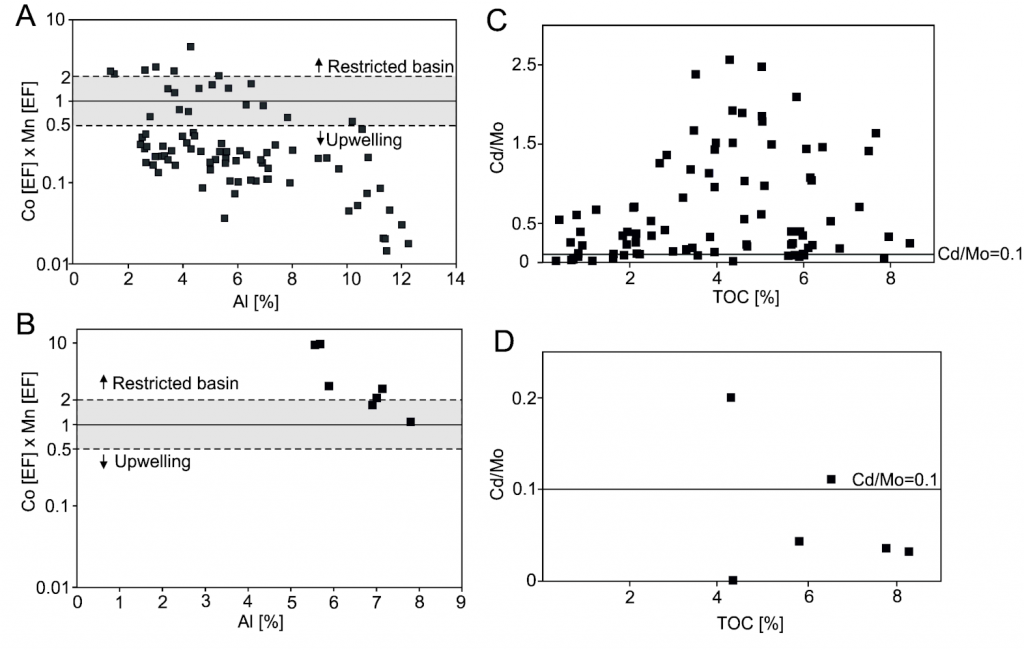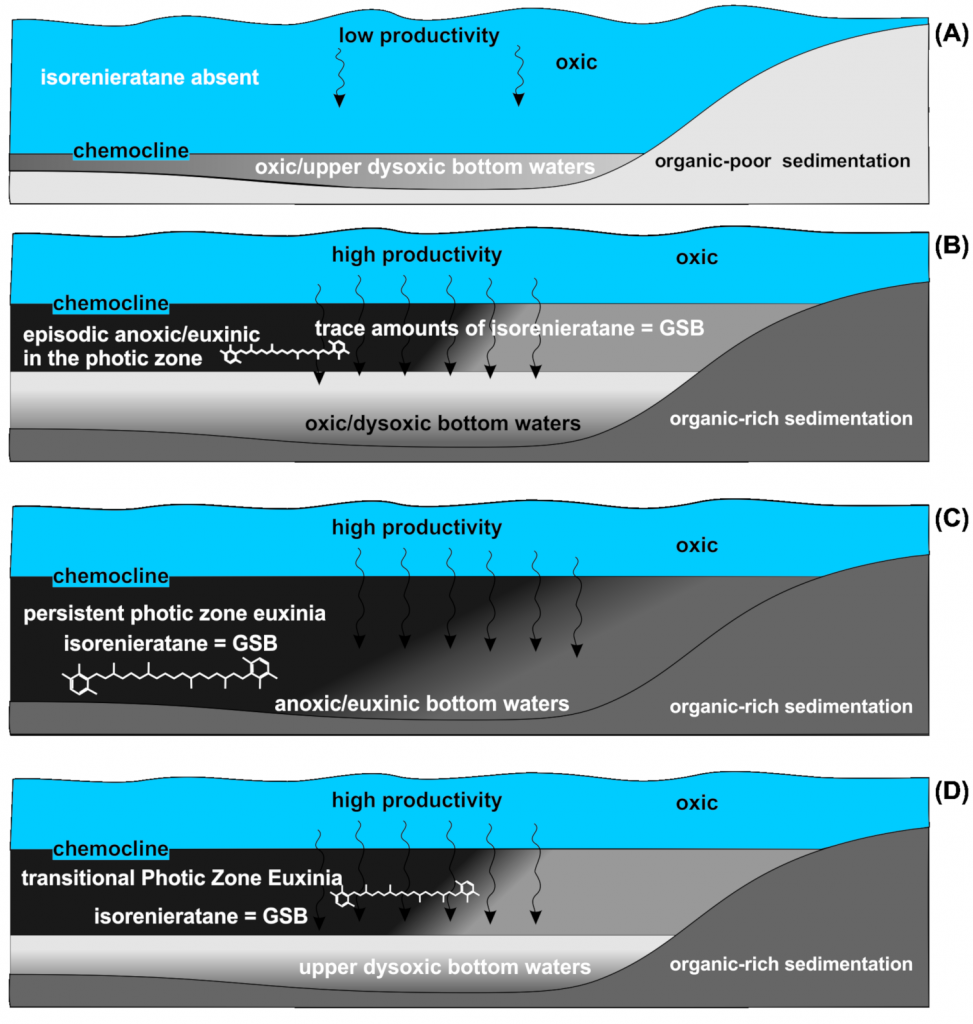Over 350 million years ago, the mid-Tournaisian anoxic event occurred when anoxic conditions in the seas and oceans emerged on a global scale. Scientists of our Institute provided the detailed reconstruction of paleoceanographic changes on the southern Laurussian shelf based on interdisciplinary research (geochemistry and paleoecological and facies investigations).
Detailed study shows that the mid-Tournaisian anoxic event was associated with increased volcanism-induced climate warming that resulted in Gondwana deglaciation and global transgression. Volcanic activity in connection with upwelling occurring on the shelf, was responsible for increasing productivity leading to the burial of large amounts of organic matter at this time, which may have consequently led to a cooling of the climate and the Late Paleozoic glaciation of Gondwana by enhanced organic carbon burial.
This paper is the result of an NCN OPUS project entitled Depositional environments during the Lower Alum Shale Event (Early Carboniferous) on the southern shelf of Laurussia in the light of integrated geochemical, paleoecological and facial investigation.
The results of the study were published in the journal: Palaeogeography, Palaeoclimatology, Palaeoecology.
Rakociński, M., Marynowski, L., Zatoń, M., Filipiak, P. 2021. The mid-Tournaisian anoxic event (Lower Carboniferous) in the Laurussian shelf basin (Poland): An integrative approach. Palaeogeography, Palaeoclimatology, Palaeoecology, 566, 110236. 1–28. https://doi.org/10.1016/j.palaeo.2021.110236







